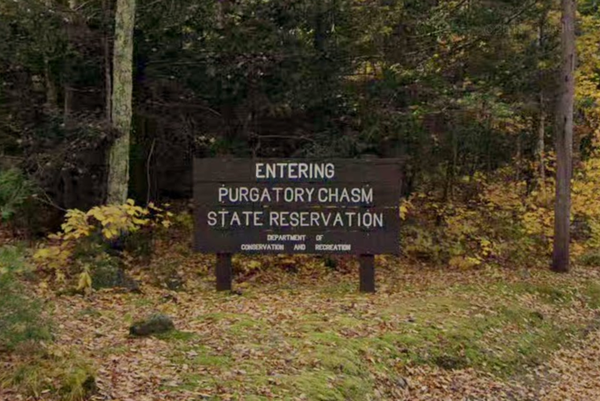WHO invented the Scottish tourist industry? It’s a question I am sometimes asked, usually by readers indignant at the suggestion that this nation only became a tourist destination after those proud Unionists Prince Albert and Queen Victoria got their hands on Balmoral Castle.
There’s no doubt that Victoria and Albert spending their summer holidays in Aberdeenshire made plenty of people across the world re-evaluate Scotland as somewhere worth visiting but the truth is they were royalty come lately to the Scottish tourist scene.
Balmorality was important in promoting Scotland, but I think you have to go further back for the “inventors” of the Scottish tourism industry which is now such a vital part of our economy.
Scotland has always been a place worth visiting, even before it was Scotland.

You can’t really count William the Conqueror, Edward Longshanks and Oliver Cromwell as tourists along with all the other English invaders over the centuries, and the Norwegians were here for longer than any of them before going home and leaving us with Up Helly Aa as a reminder of their presence.
So in the modern sense of tourism – ie, travelling for pleasure – I would suggest the first great tourist to Scotland was Dr Samuel Johnson, who with his Scottish lawyer friend James Boswell composed the first great travelogues about the Hebrides in the 1770s.
Just prior to their journeys, the poet James Macpherson almost single-handedly made Scotland an attraction for the Romantic movement with his Ossian tales, and these stories – which he largely made up – inspired people such as the composer Felix Mendelssohn to visit Scotland for decades afterwards.
The poet William Wordsworth and his sister Dorothy, accompanied part of the way by Samuel Taylor Coleridge, made a celebrated tour of Scotland for six weeks in 1803 and it was Dorothy who wrote the journal of the tour that, after her death, became a literary sensation that inspired people to follow in their footsteps.
To my mind, however, the man who invented Scottish tourism was our greatest literary figure of the early 19th century, Sir Walter Scott. Apart from his invention of tartanry that marked the visit of King George IV in 1822, Scott’s tales of Scotland and Scottish history were worldwide bestsellers.
It is Scott who is at the heart of this and next week’s columns, which I am writing to celebrate the 125th anniversary of one of the most extraordinary ships in Scottish history, the Sir Walter Scott which has been sailing on Loch Katrine since 1900.
Set in the Trossachs east of Loch Lomond – it will feature in next week’s column – Loch Katrine has long been celebrated as one of our most beautiful lochs, and it was Scott who helped make it famous with his narrative poem The Lady Of The Lake.
Published in 1810, but begun four years earlier, the poem set out to do for the Highlands what Scott had achieved for the Borders with The Lay Of The Last Minstrel.
He wrote to his friend Lady Abercorn that he had “a grand work in contemplation … a Highland romance of love, magic and war founded upon the manners of our mountaineers”.
The epic poem set in the Trossachs has three main plots or sub-plots with the principal action featuring three men, Malcolm Graeme, Roderick Dhu, and James Fitz-James, who vie to win the love of Ellen Douglas.
The feud between King James V of Scotland and James Douglas also features as does the conflict between the Lowland Scots, led by the King, and the Highland clans led by Roderick Dhu of Clan Alpine.
The poem was a hit from the start and is credited with starting the vogue for tourism to the Highlands.
Some of its lines were picked up and used elsewhere: “Hail to the chief who in triumph advances! Honoured and blessed be the ever-green pine!”
It also shows that Scott knew the area well: “The Summer dawn’s reflected hue To purple changed Loch Katrine blue; Mildly and soft the western breeze Just kissed the lake, just stirred the trees, And the pleased lake, like maiden coy, Trembled but dimpled not for joy The mountain-shadows on her breast Were neither broken nor at rest; In bright uncertainty they lie, Like future joys to Fancy’s eye."
People flocked to Loch Katrine just as fans of Outlander visit filming locations in our current day.
At first, there were only rowing boats to convey them around the loch, but when the eight-oared wooden galley Water Witch was introduced as a ferry, the number of visitors increased. Legend has it that tourists were taken on Water Witch to Jonathon’s Isle to sample “goat’s milk” only to be served whisky.
With the coming of steam, it was not long before Loch Katrine had its first steam-powered vessel, the Gipsy, launched in 1843. Just a week after her arrival, Gipsy sank and her remnants still lie near Trossachs Pier. Did the ferrymen of Water Witch take the ultimate action against new competition? I guess we’ll never know.
Rail travel made previously inaccessible parts of the Highlands ripe for visitation and local companies were formed to serve this new tourist trade.
The excellent lochkatrine.com website takes up the story: “In 1846, a new steamship named Rob Roy entered service, named after the legendary Scottish outlaw Rob Roy MacGregor, who was closely associated with the Trossachs region. Rob Roy was a more robust and reliable paddle steamer, capable of carrying larger numbers of passengers. The success of this vessel helped solidify Loch Katrine’s reputation as a tourist destination.
Rob Roy offered scenic cruises and played a vital role in connecting remote communities, as there were few roads in the area then.”
Next week I will tell the story of the Sir Walter Scott, 125 years old this year. Its history is fascinating, not least because it’s still operating on Loch Katrine.







